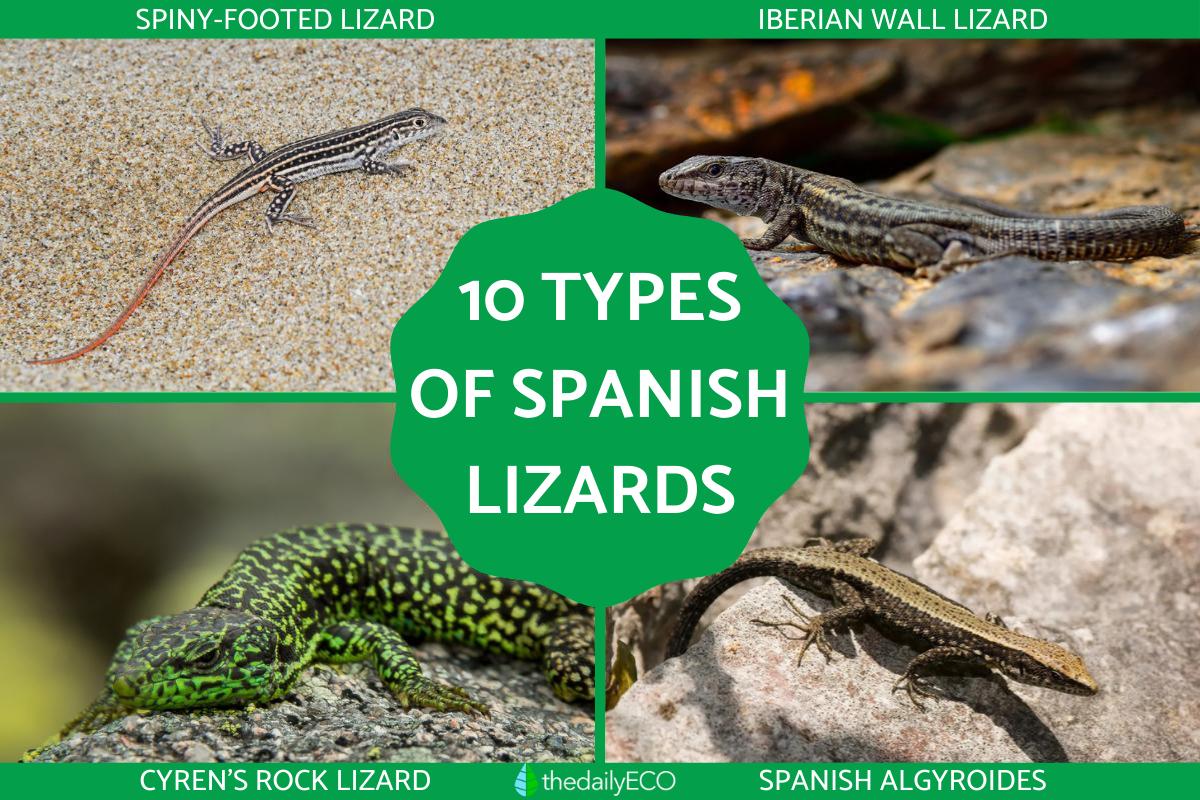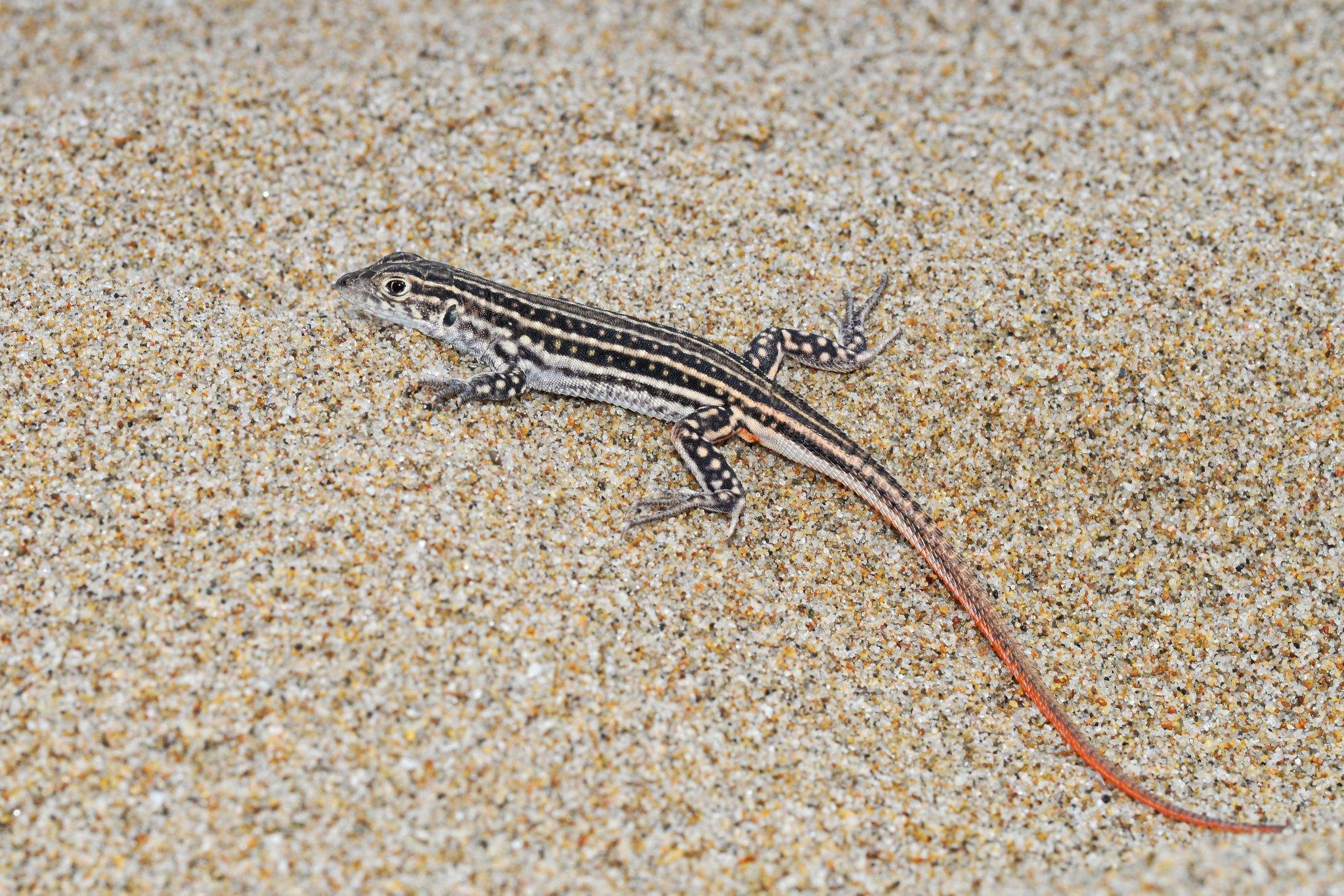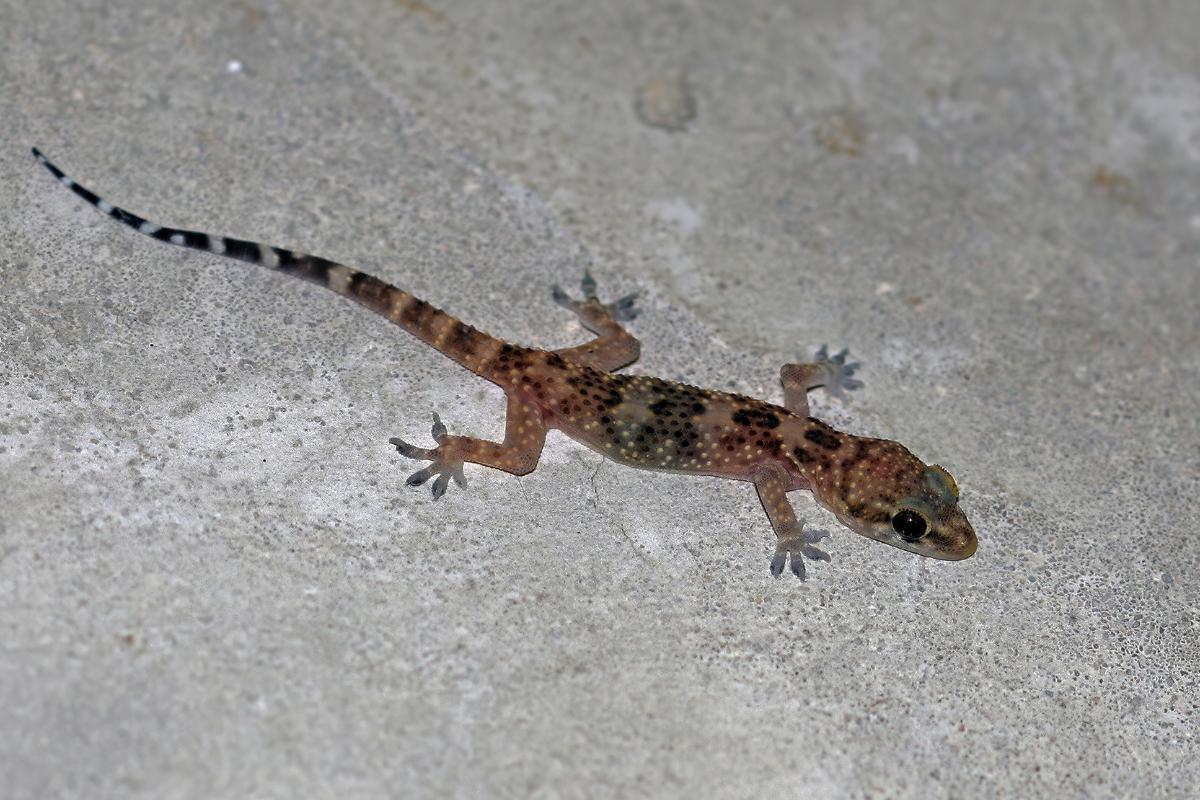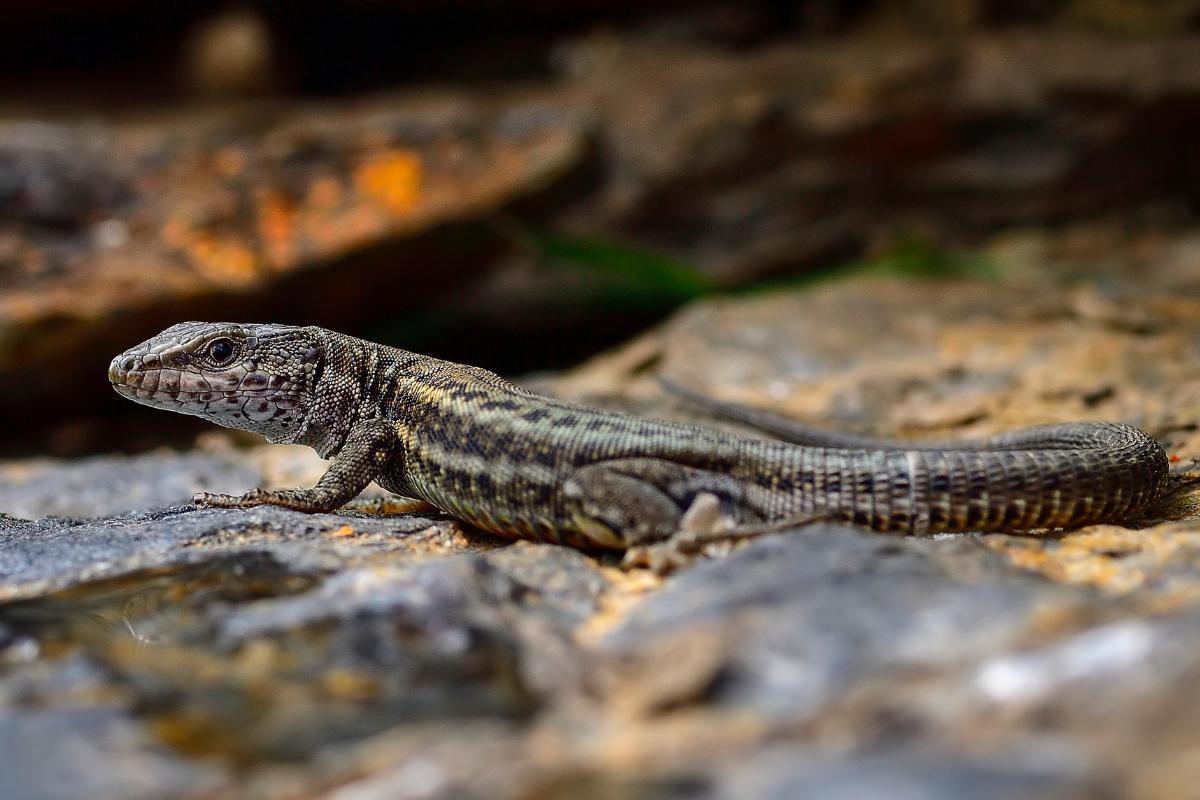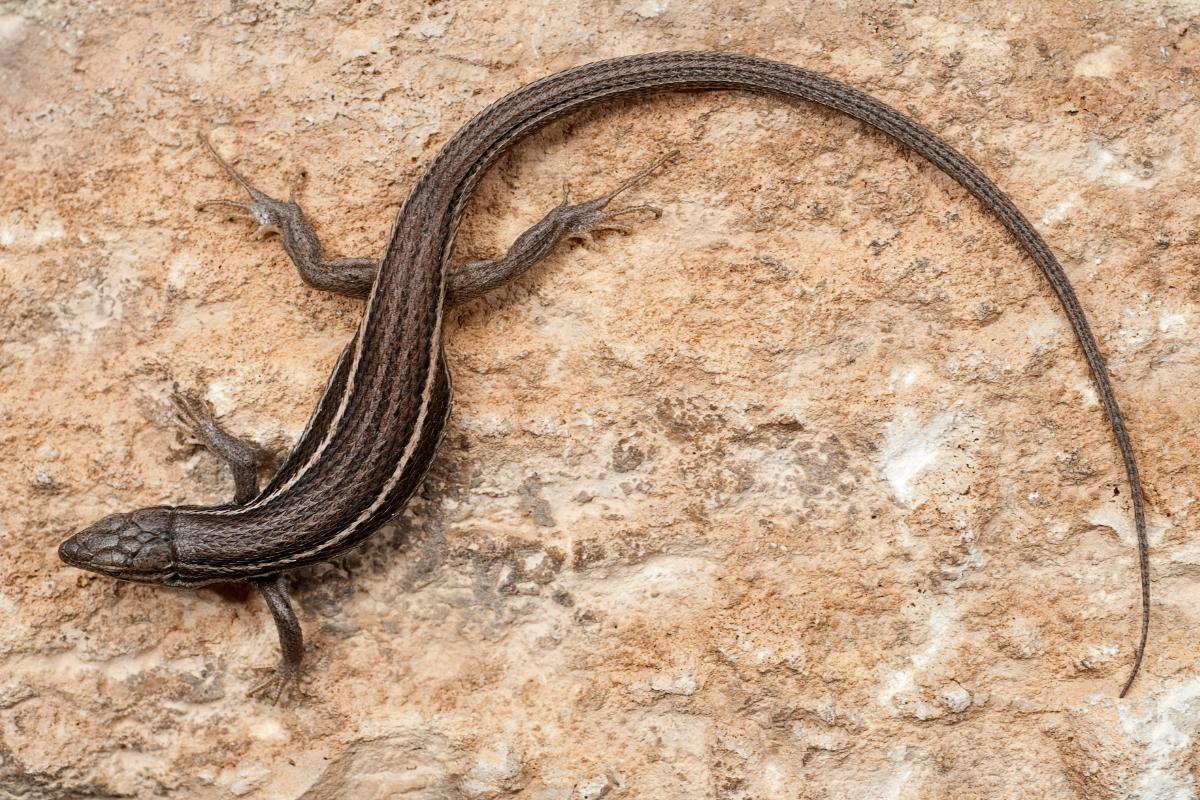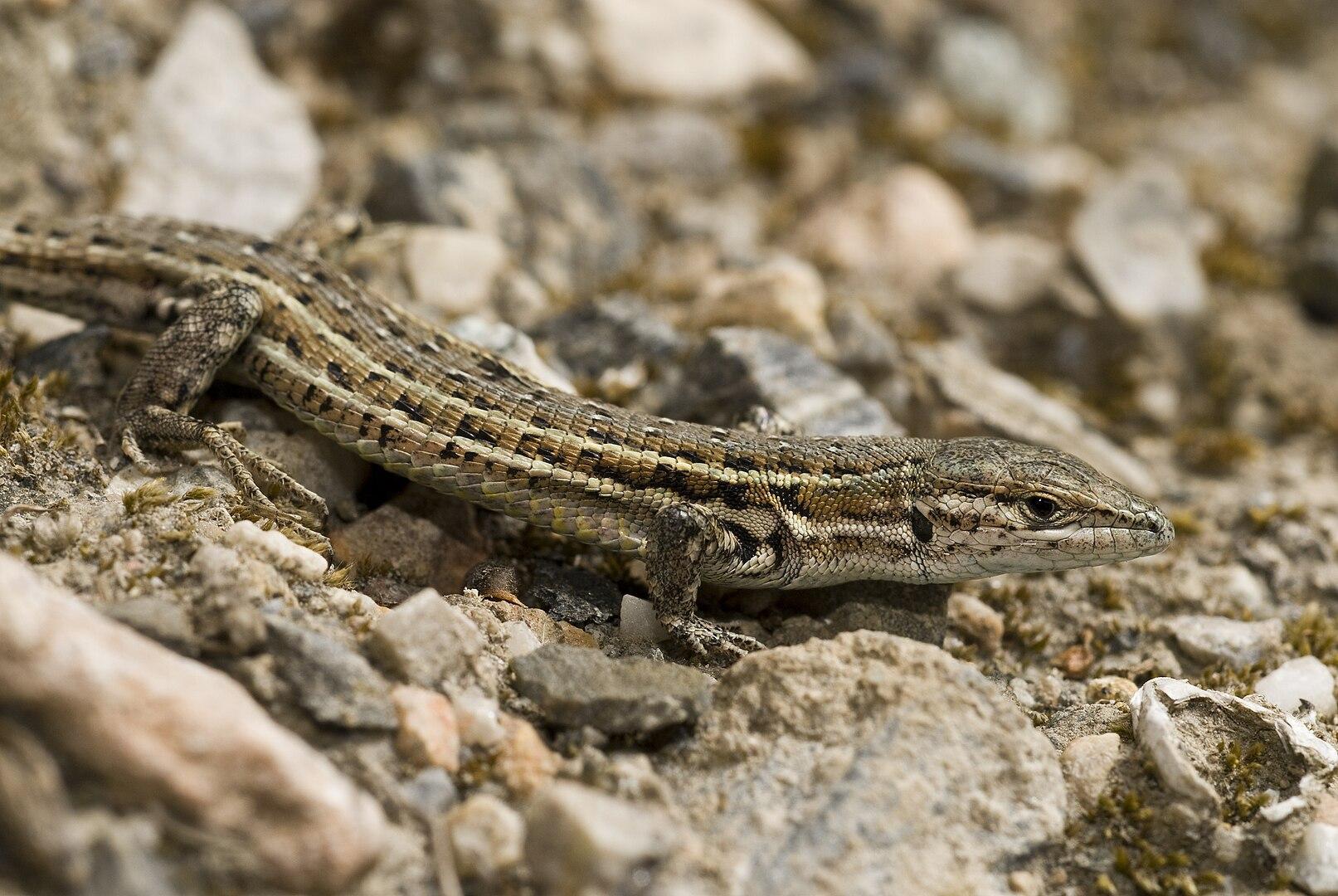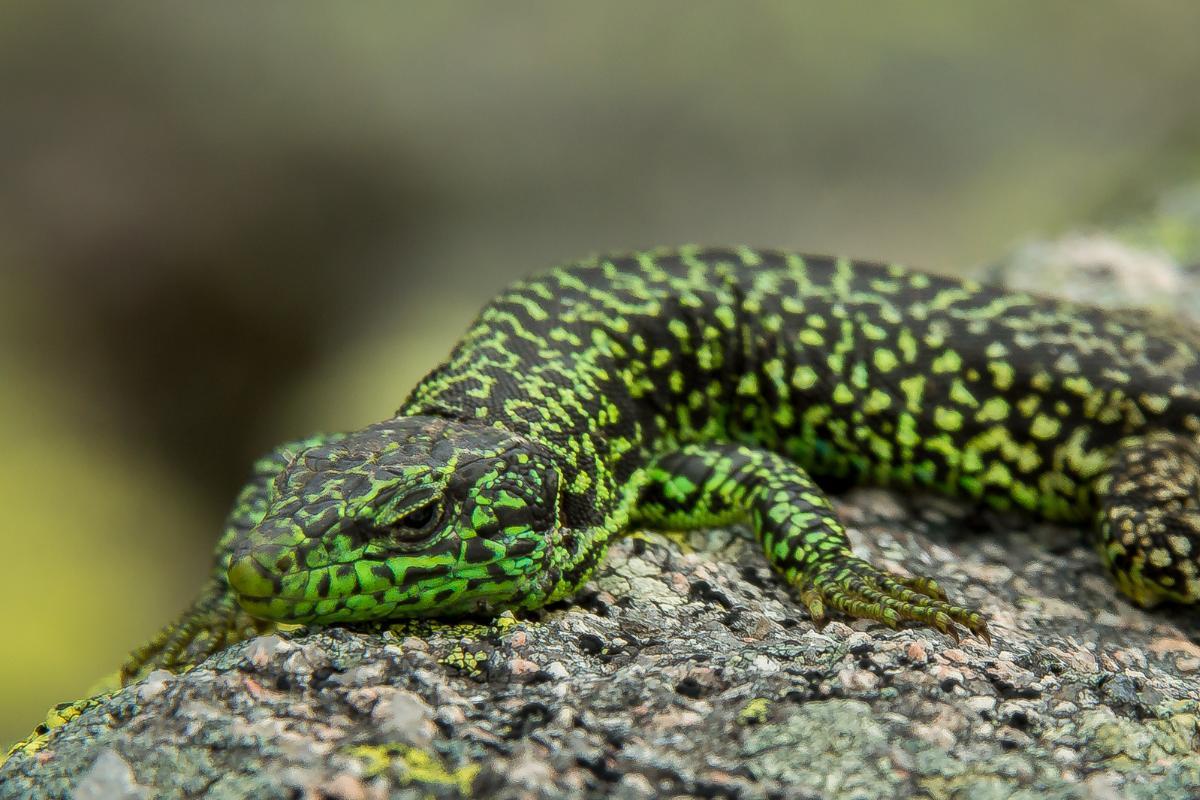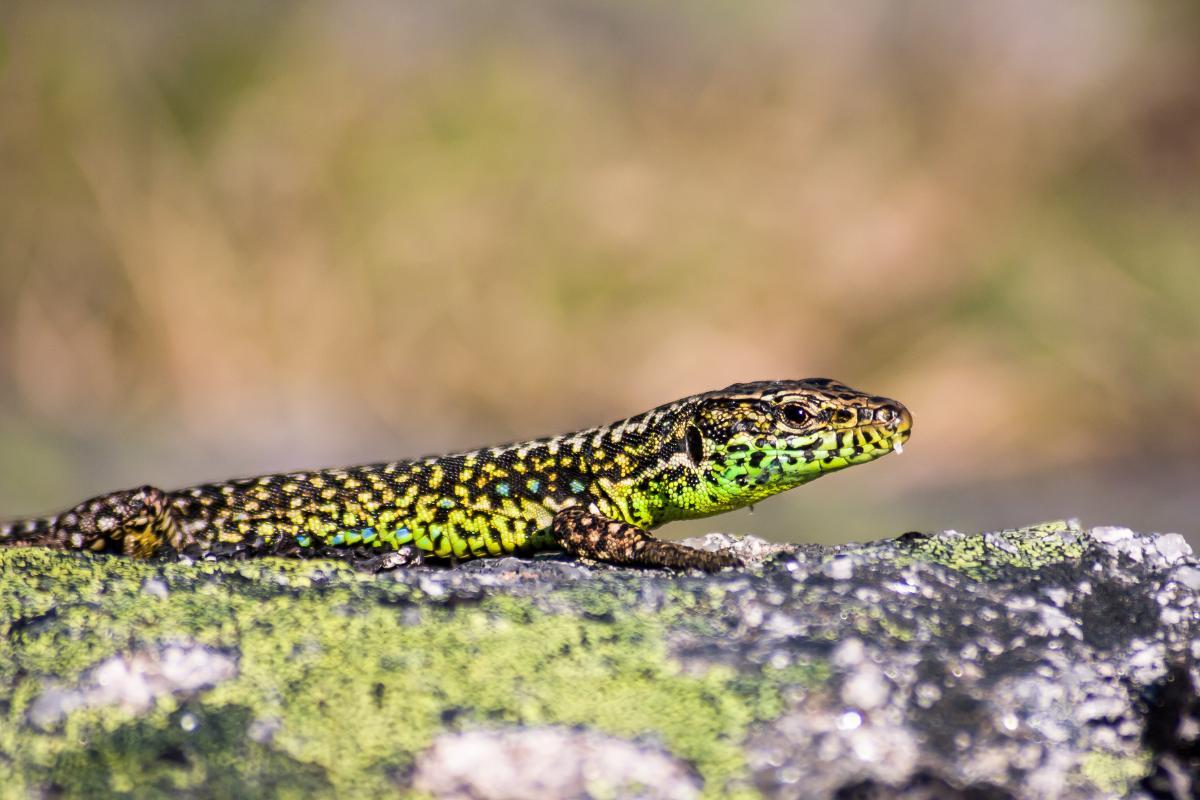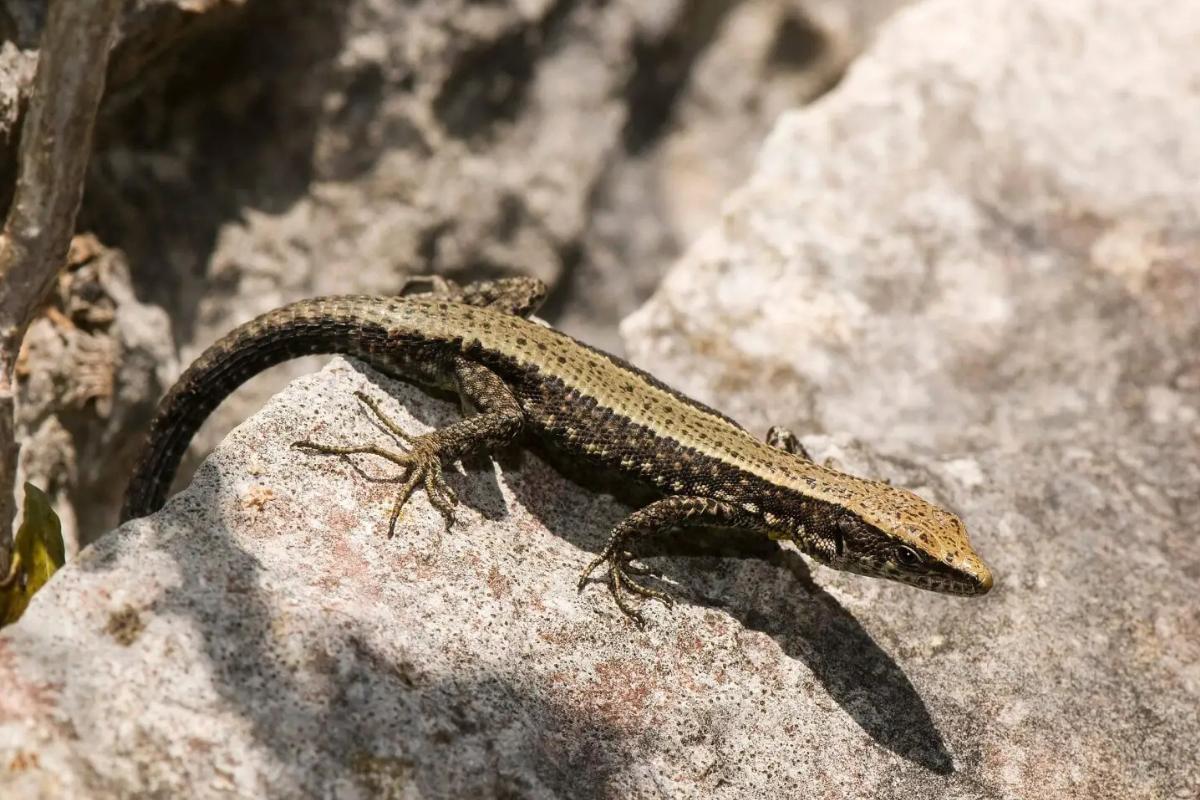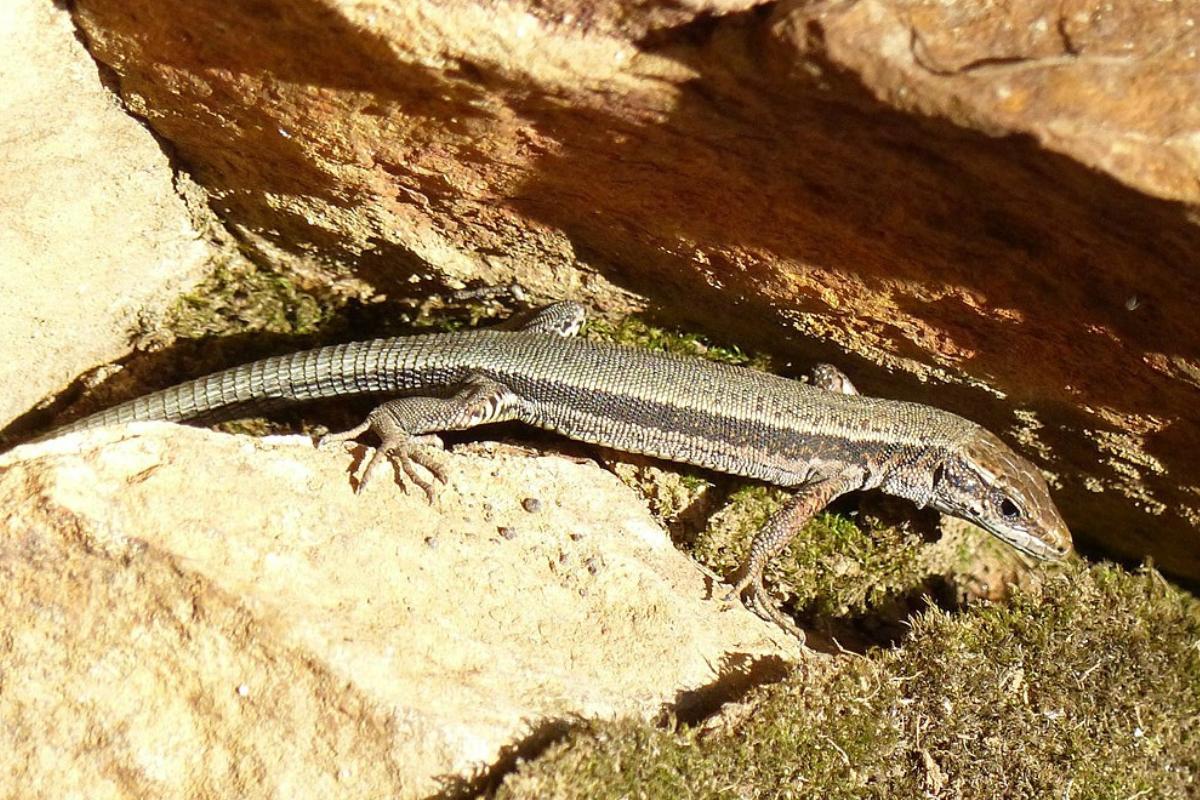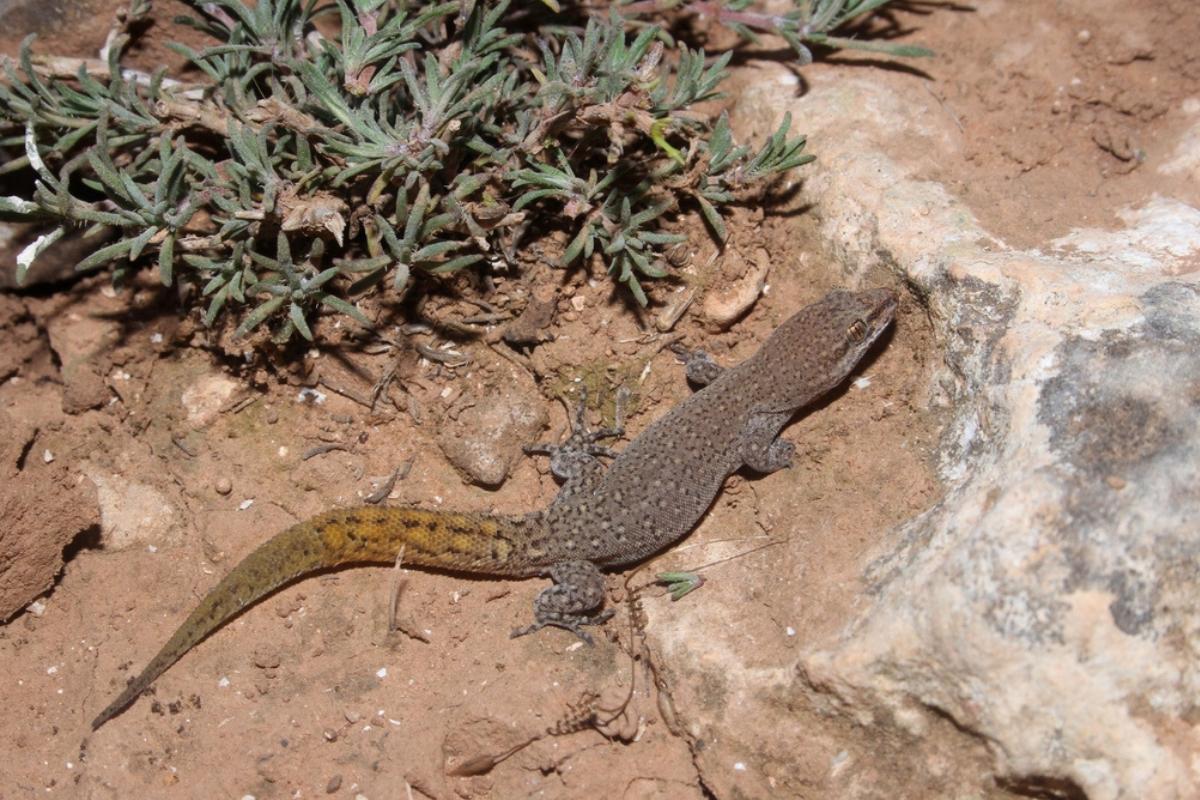Types of Spanish Lizards


The diversity of reptiles in Spain is one of the richest in Europe, largely due to its varied climate. Spain is a country which has many different geographical features, habitats and climates, meaning many lizards species can adapt to different areas. In addition to lizards such as the gecko, there are snakes and turtles. Among the lizards of Spain we can find include the spiny-footed lizard (Acanthodactylus erythrurus), Iberian wall lizard (Podarcis hispanicus), Algerian psammodromus (Psammodromus algirus) and Spanish psammodromus (Psammodromus hispanicus ), among many others. Learn more as thedailyECO shares 10 types of Spanish lizards with photos.
- Spiny-footed lizard
- Mediterranean house gecko
- Iberian wall lizard
- Algerian psammodromus
- Spanish psammodromus
- Cyren's rock lizard
- Iberian rock lizard lizard
- Spanish algyroides
- Aurelio's rock lizard
- Morocco lizard-fingered gecko
Spiny-footed lizard
The spiny-footed lizard (Acanthodactylus erythrurus) is a Spanish lizard species native to the Iberian Peninsula and northwest Africa. It lives in sandy or rocky soils with little vegetation. Its common name is due to the fact that it has relatively long nails on its feet that look like spines. There is great variation in the color pattern of their scales, but they all have black and white spots. It feeds mainly on insects although it can also consume plant material during spring and summer.
Although they are not found in Spain, you may want to learn about another type of lizard with our article on the different types of iguana.
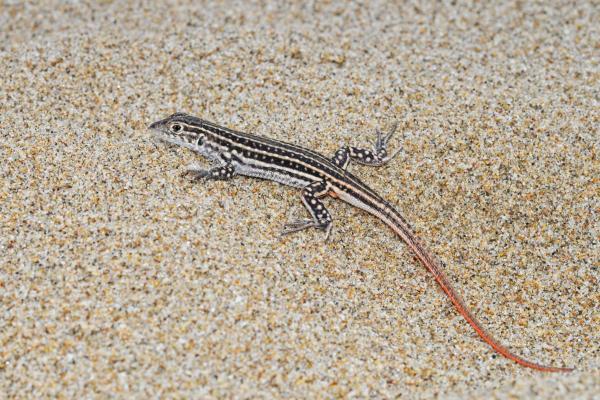
Mediterranean house gecko
The Mediterranean house gecko (Hemidactylus turcicus) is a lizard species native to Spain, Portugal, France, the Italian coast and many islands in the Mediterranean basin. It has also populations much further afield thanks to being introduced to many parts of the world, including America. It is a very adaptable species that can be found in various environments, even inside homes. It is insectivorous, nocturnal and its body is pale in color with black spots. It is also known as the moon lizard as it tends to come out at night.
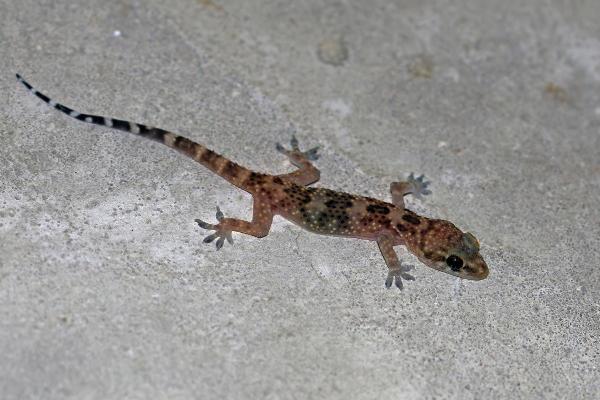
Iberian wall lizard
The Iberian wall lizard (Podarcis hispanicus) lives in almost all the Iberian Peninsula, except in high mountain areas. It is also found in North Africa and southeastern France. Males are usually larger than females and have a triangular head with more marked scales. The coloration of these Spanish lizards depends on the environment where they are found, since the more desert and rocky the environment, the lighter their scales will be. It feeds mainly on insects and arachnids both on the ground and in trees.
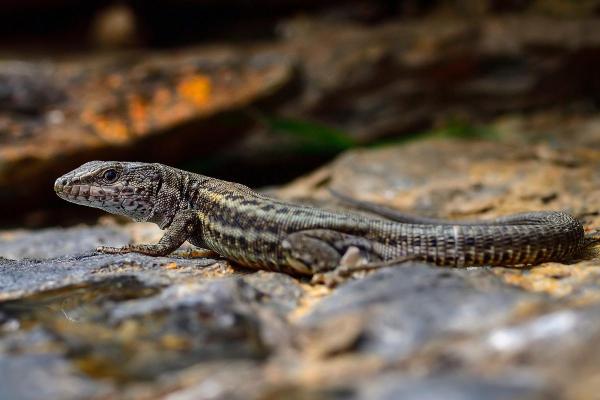
Algerian psammodromus
Also known as the large psammodromus, the Algerian psammodromus (Psammodromus algirus) is another of the many species that inhabit the Iberian Peninsula, occupying Mediterranean forests and scrublands. They can also be found in agricultural fields. It is easy to identify by its very developed tail. It is brown with two white lines on both sides of the body. When males are in heat, they have an orange color on their throat and in certain regions of the head. It feeds mainly on orthopterans such as grasshoppers and crickets, which it hunts easily.
Learn more about another type of orthopteran with our article on why cicadas are so loud.
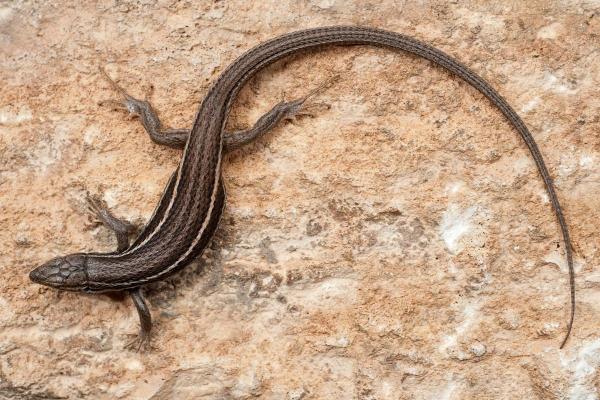
Spanish psammodromus
Aother member of the Psammodromus genus, the Spanish psammodromus (Psammodromus hispanicus) is native to France, Portugal and Spain. It inhabits a variety of environments such as shrublands, grasslands, sandy coasts and rural areas.
Like the Algerian psammodromus and the spiny-footed lizard, it emits high-pitched calls when captured. Like the rest of the individuals of its genus, it is characterized by having keeled scales. Although it may be threatened by habitat loss due to agriculture and fires, it has been classified as of least concern by the IUCN due to its wide distribution and the stability of its populations.
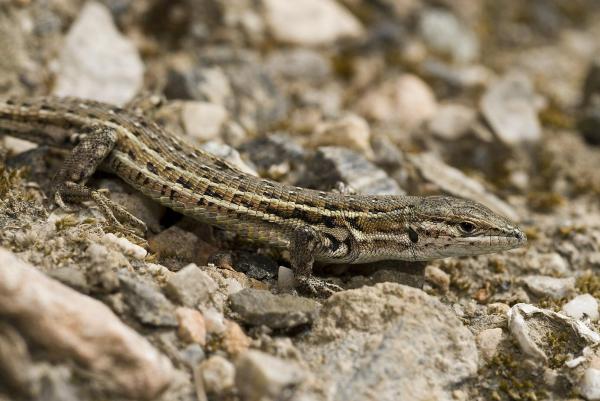
Cyren's rock lizard
The Cyren's rock lizard (Iberolacerta cyreni) is one of the types of lizards in Spain which is endemic to the Sistema Central (Central System) of Spain. This is a mountain system located in the center of the Iberian Peninsula. This species lives in rocky and cool areas of high mountains above 1,100 to 2,600 meters above sea level. It is often found near water sources such as streams or lakes. Its body is robust and has a very long tail. Its coloration varies from brown to bright green with dark spots along the back, being denser on the sides.
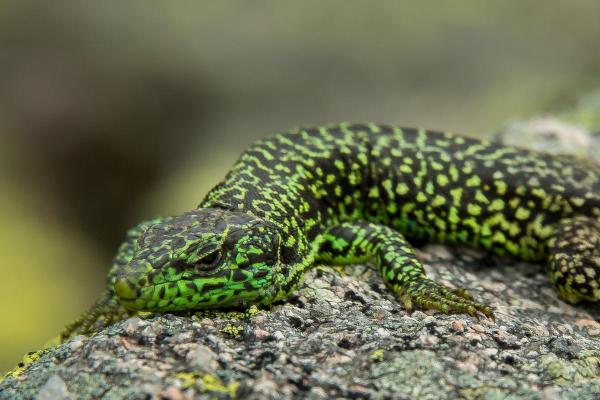
Iberian rock lizard lizard
The Iberian rock lizard (Iberolacerta monticola) is endemic to the Iberian Peninsula, occurring in the Cantabrian Mountains and from Galicia to the Picos de Europa. It is also present in some restricted areas of lower altitude in northwestern Spain and in the Serra da Estrela in central Portugal. It is medium-sized, robust and has a brownish or bright green back with black reticulation. Its subpopulations present in the western lowlands of its distribution area is highly fragmented. It is threatened by habitat loss due to the advance of agriculture, forestry and tourism.
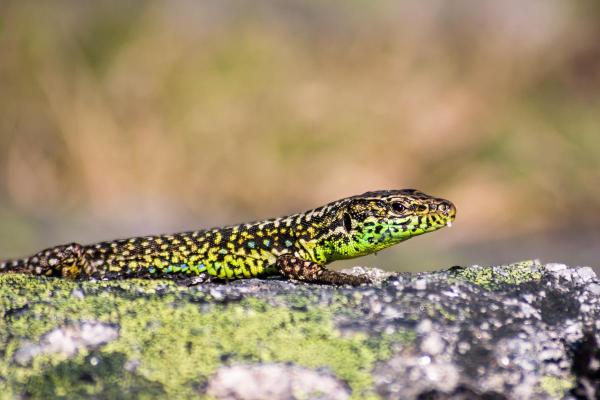
Spanish algyroides
Commonly known as the Valverde's lizard, the Spanish algyroides (Algyroides marchi) is an endemic species of Spanish lizard whose geographic distribution is limited to the southeastern mountain ranges that make up the Iberian Massif. These are the Sierra de Alcaraz, Cazorla and Segura.
This type of lizard in Spain lives in rocky places with little vegetation, as well as in forests or in their surroundings. They prefer humid areas. Its extreme sensitivity to dehydration makes it very vulnerable to the effects of climate change and the degradation of its natural habitat. Its belly is bluish and the sides of the body are brown with a pattern of light and dark spots with a central light brown stripe.
Learn about another common type of Spanish lizard with our article asking are geckos poisonous?
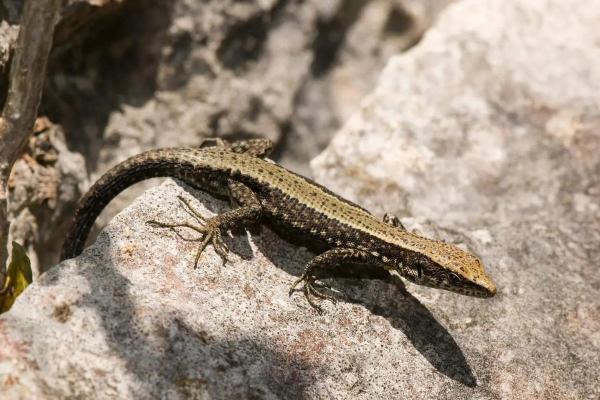
Aurelio's rock lizard
Among other types of lizards in Spain we find the Aurelio's rock lizard (Iberolacerta aurelioi), a small species with a very light brown back, although it is sometimes olive-coloured. It has two dark costal bands on its sides and numerous dark spots. Its distribution covers the Pyrenees where it lives in rocky areas, generally associated with glacial valleys. Like the Valverde's lizard, it is possible that climate change represents one of the most important threats to this species. Its diet is based on insects.
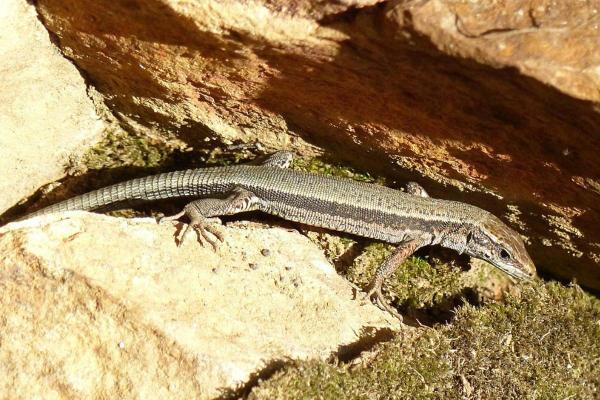
Morocco lizard-fingered gecko
The Morocco lizard-fingered gecko (Saurodactylus mauritanicus) is native to Spain, Morocco and Algeria. It lives in arid and semi-arid areas, usually in rocky areas with steep slopes and vegetation in which it can hide. Locally, it is threatened by habitat loss caused by urbanization and changes in land use. As for its morphological characteristics, it has a brown back and spots on its tail, but not its body. It may have a white V-shaped line on its head.
Now that you know some types of Spanish lizards, you may also be interested in knowing the types of bees and wasps found in Spain.
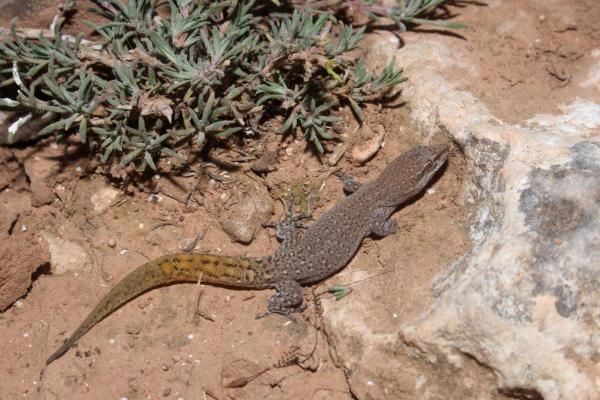
If you want to read similar articles to Types of Spanish Lizards, we recommend you visit our Wild animals category.
- Virtual encyclopedia of Spanish vertebrates. National Museum of Natural Sciences.
https://www.vertebradosibericos.org/reptiles/listareptiles.html - IUCN. (2024). The IUCN Red List of Threatened Species.
https://www.iucnredlist.org





